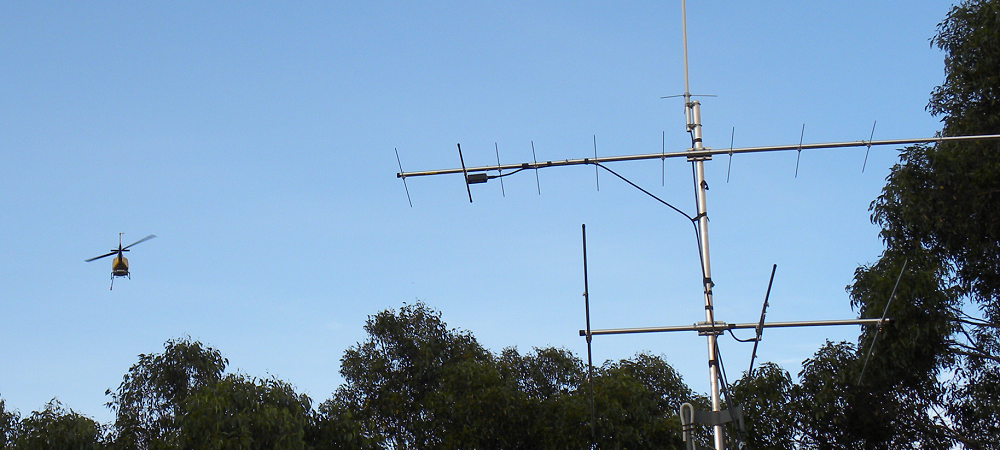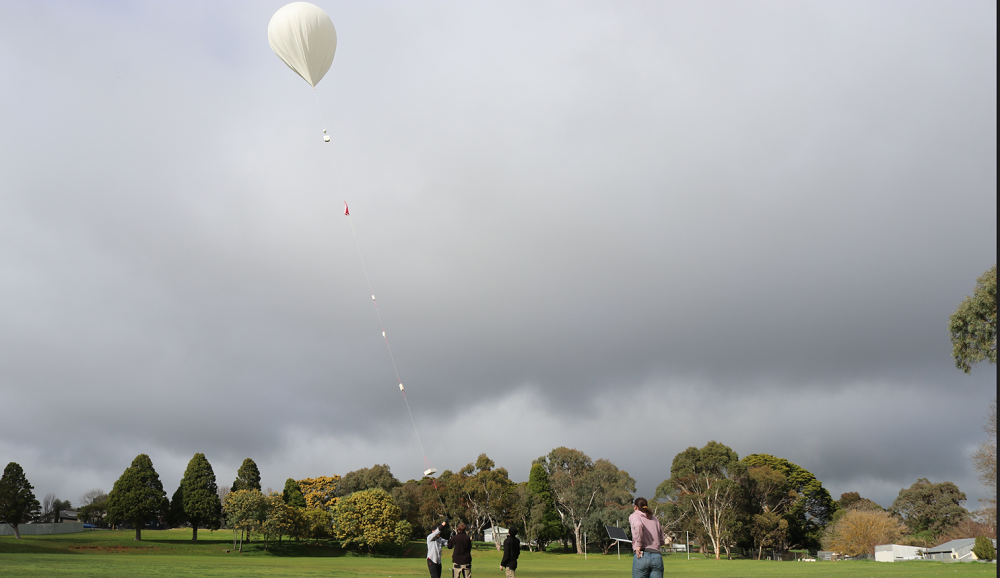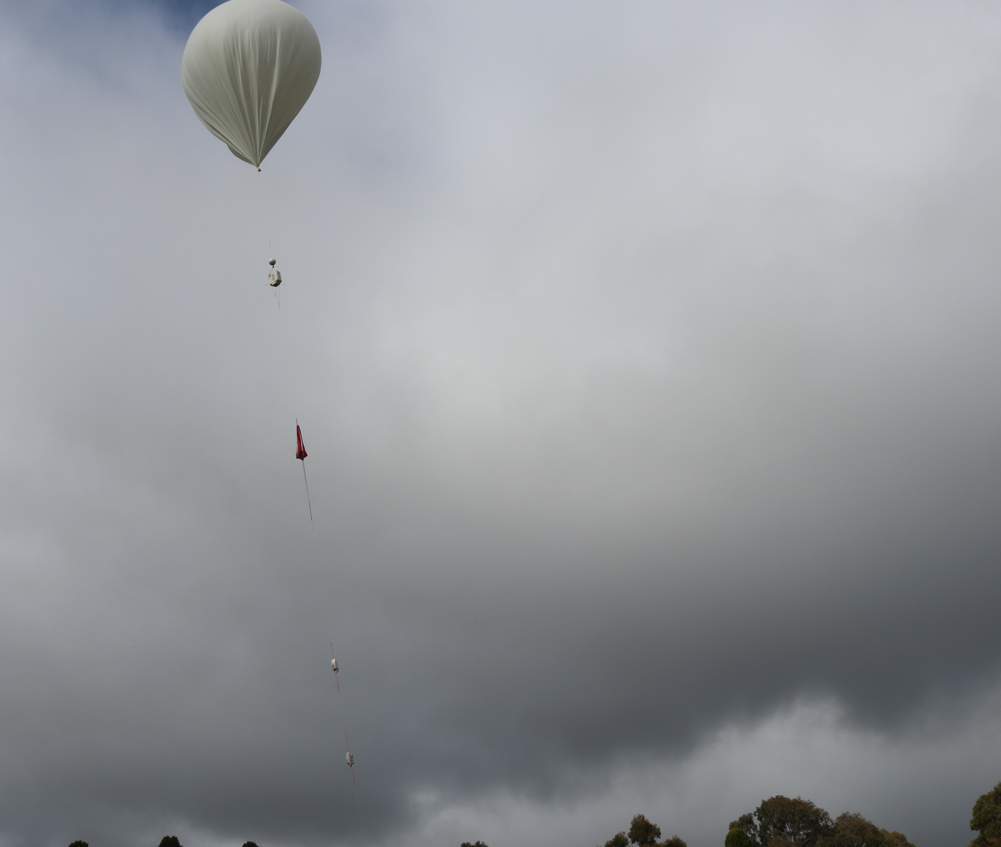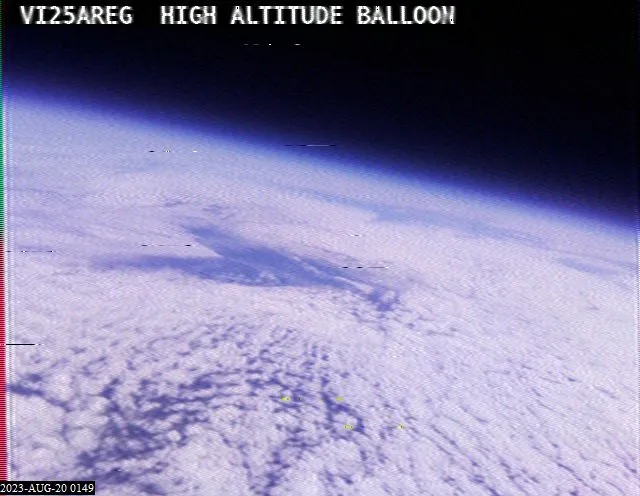The photo above shows two ‘naked’ towers. The larger tower on the left of the picture is a Nally tower. I purchased this tower in the late 1970s and brought it to Adelaide in June 1982 and during a relatively short stay in a unit we purchased a house in Somerton Park, where we lived for about 20 years. I sought and gained approval from the local council to erect the tower. After searching and not finding riggers, I decided I would keep it but try and find something smaller and lighter which I could manage with assistance from some amateur friends (more on that later).
This photo shows the Nally tower in ‘full bloom’.

The vertical is for 2metres and 70 centimetres FM and other digital modes, eg C4FM and Dstar. To the left in the photo is a helicopter with the water hose showing on the left hand side as you view the machine. The next antenna is a 12 element Cushcraft yagi, horizontally polarised, and used for weak signal work. I was never able to work a Northern Territory station on 2m ssb or cw, but I worked the NT on 6 metres ssb. I worked VKs 1, 2, 3, 4, 5, 6 and 7 on two metres ssb. The three element high frequency beam is a TET 3 – 3, from Mark, in WA. Mark’s antennas are splendid and tough and he sells spare parts.
The smaller tower adjacent is a Varcoe windmill from Mount Gambier – see photo 1 above.
This photo shows the Nally tower stripped of antennas ready for dismantling. On the right is my windmill tower also stripped ready for dismantling.
From left to right, Paul, VK5PH, Grant, VK5GR, Oly, VK5XDX, Steve, VK5SFA, Hank, VK5XB and John, VK5BJE. Paul’s Nally gin pole is visible on the ground in the foreground.

Getting ready to take the top or high section of the tower out from the bottom section. The gin pole was then used to lower the bottom part of the tower and the last job was to grind off the steel post.
All of the work was conducted professionally and with concern to observe all safety requirements.
I wish to record my thanks to the amateurs (photos above) who helped me dismantle my antenna farm. Some of you I have known for nearly 40 years. The best way I can express my appreciation is to cite Julia Baird (2023, p. 1). ‘Grace is like the sun: it warms us, fuels us and unerringly brings light’. The time gifted to me and the physical effort is a gift of grace. Thank you all.
Julia Baird, 2023, Bright shining how grace changes every thing. Fourth Estate, Australia.
Julia Baird is a co-host of the ABC’s The Drum, a writer and historian and I am a fan.

















